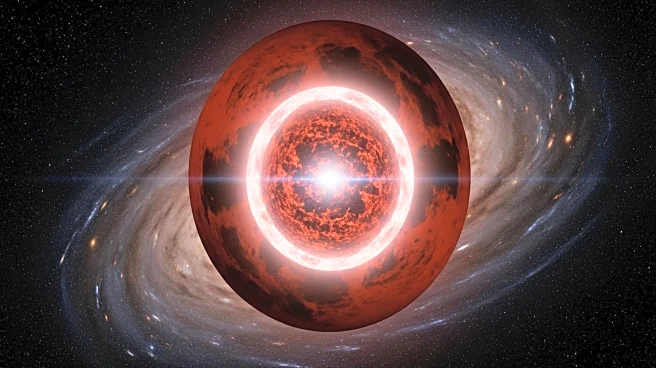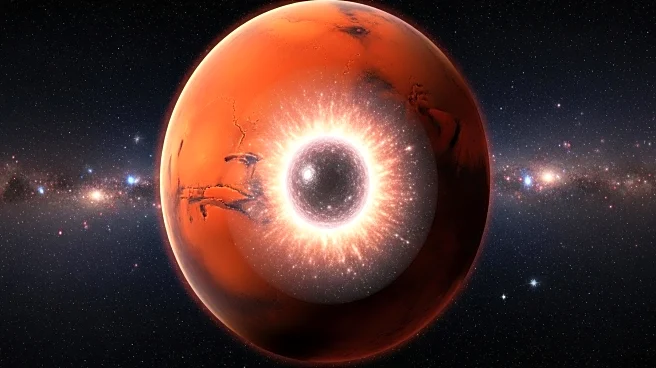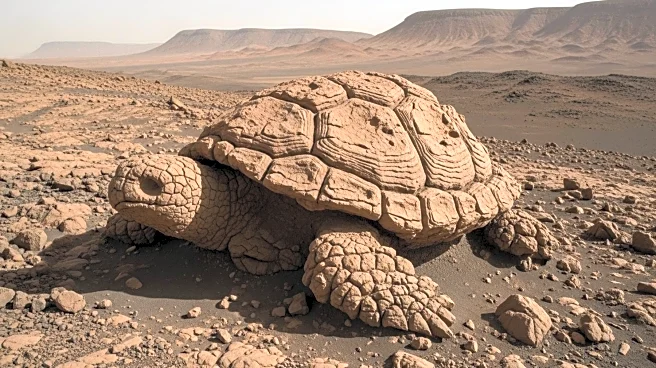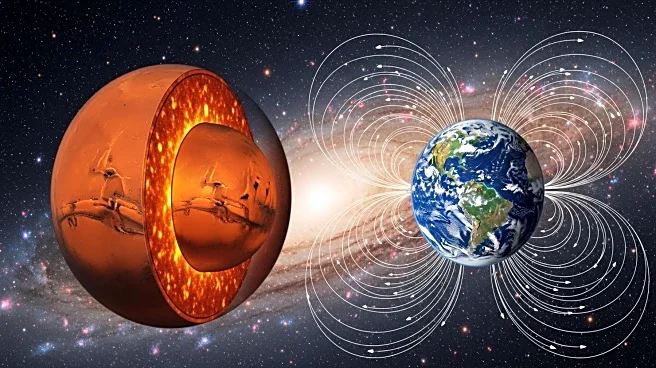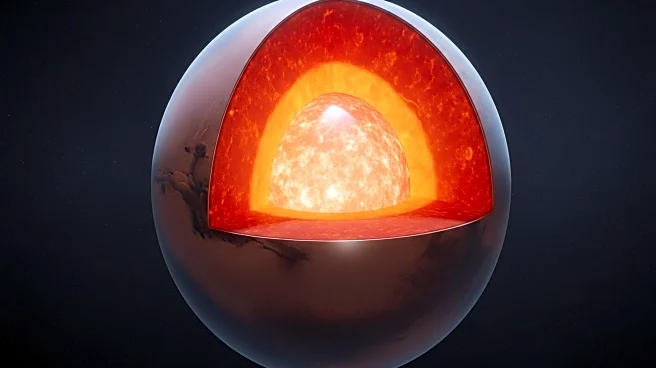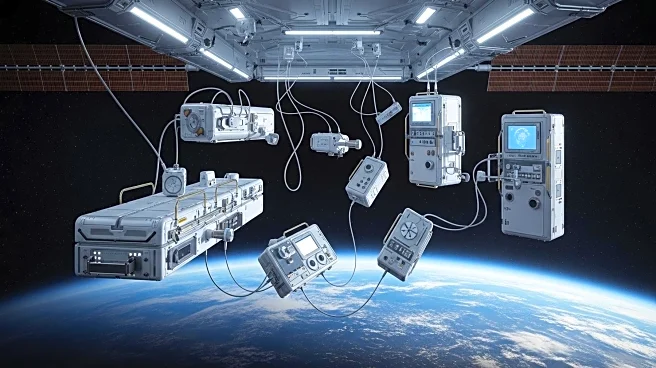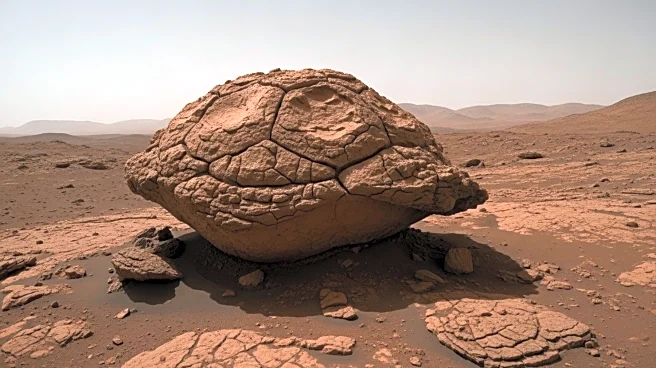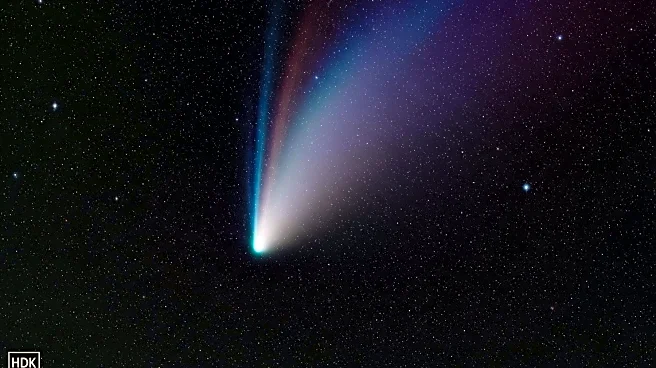What's Happening?
A joint study by Chinese and US scientists has revealed the presence of a solid inner core on Mars, challenging long-held beliefs about the planet's structure. The research, published in Nature, utilized seismic data from NASA's InSight mission to identify a solid core with a radius of approximately 600 km. This discovery provides new insights into Mars' thermal and chemical state and suggests that Mars may have once developed plate tectonics, similar to Earth. The findings imply a concentration of light elements in the inner core, separated from the outer core through crystallization.
Why It's Important?
The discovery of a solid inner core on Mars has significant implications for our understanding of planetary formation and evolution. It challenges existing theories about Mars' structure and suggests that the planet may have experienced tectonic activity. This could reshape our understanding of Mars' geological history and its potential for hosting life. The findings also contribute to the broader knowledge of planetary science, influencing future exploration and research. Understanding Mars' core structure could impact the development of space missions and technologies, enhancing our ability to study and explore the planet.
What's Next?
Further research is needed to explore the implications of Mars' solid inner core and its potential for tectonic activity. Scientists may focus on analyzing additional seismic data to understand the core's composition and behavior. The findings could lead to new models and theories about planetary formation and evolution, influencing future space missions. Researchers may also investigate the potential for life on Mars, considering the planet's geological history and core structure. The study opens new avenues for exploration and research, contributing to the advancement of planetary science.
